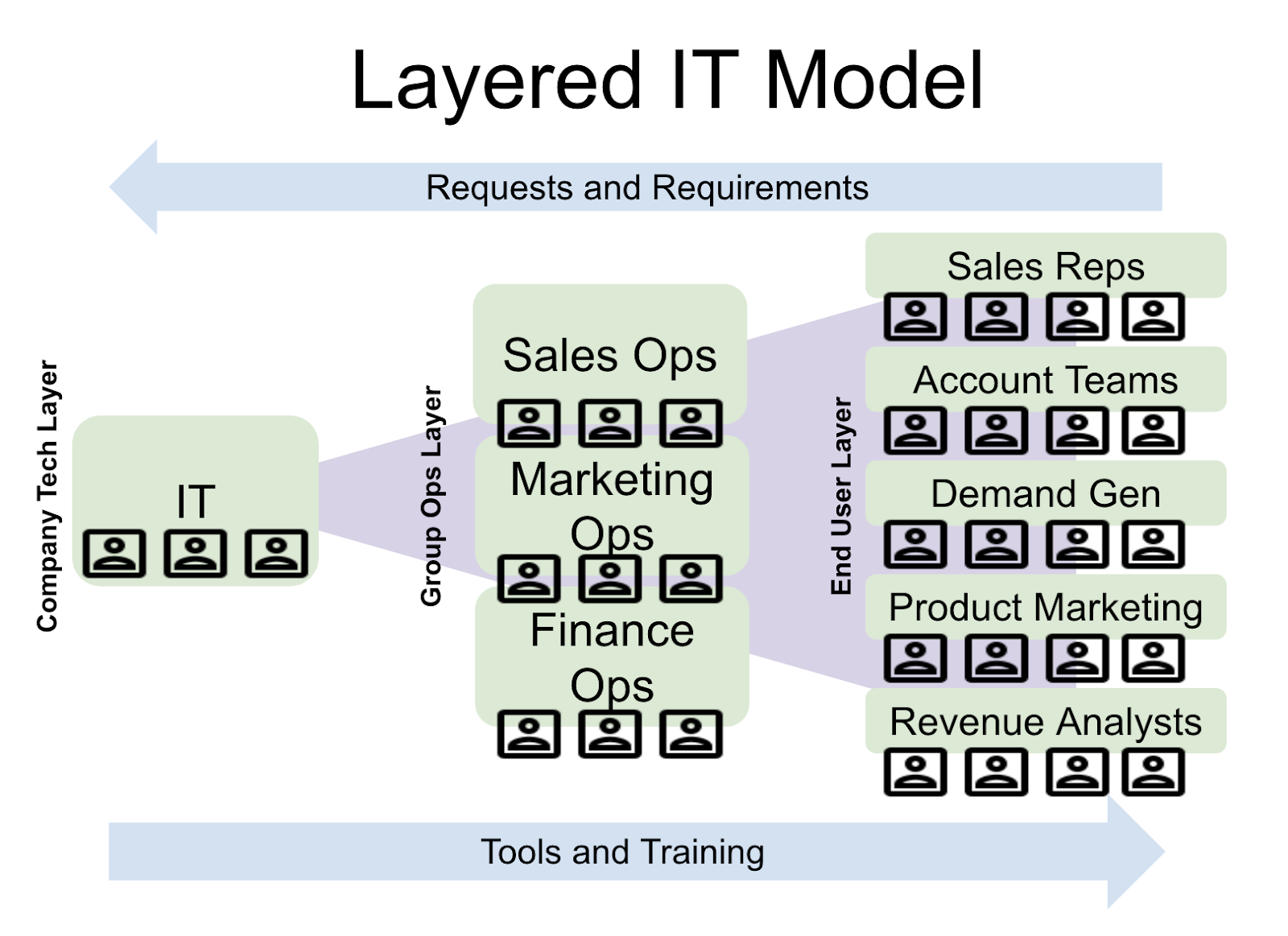From IT decentralization to end-user innovation


Matt Eckler
Automation Evangelist
Businesses that empower teams to learn new technical skills drive efficiencies and flip from being cost driven to being value driven.
Data governance, IT decentralization, and a new wave of innovation
There is a new generation of low-code technology that businesses can use to quickly upskill their workforce technically to execute faster, improve customer experience, and drive more revenue. Rather than relying on the traditional model of centralized IT, teams across the organization are evolving. Traditional marketers, sellers, support agents, HR managers, and others are becoming “builders,” or as Gartner calls them, “citizen developers,” professionals who aren’t engineers but have the power to address technical challenges. The analyst firm suggests that by 2023, citizen developers will outnumber professional developers four to one.

The average enterprise uses more than 1,200 apps. Image courtesy Netskope. We’re seeing a new breed of builders who are decentralizing some of the traditional functions of IT. What’s leading the switch from centralized vs. decentralized IT governance? Builders are rapidly developing expertise in low-code technology. Low code is democratizing access to managing complex technical challenges that used to be the exclusive domain of IT. Builders are also becoming skilled automation and integration experts who can quickly deliver powerful process automation and data integration solutions within their stack. Most importantly, using low code, builders can execute their processes without having to deploy infrastructure, figure out complicated authentication methods and API schemas, and write code. By building mastery with low code, builders can abstract important details, speeding up their ability to learn while keeping their focus where it should be–on their process and integration needs.
How IT empowers lines of business to innovate
Tech stacks continue to explode, causing businesses to house larger IT groups. The average enterprise reportedly uses more than 1,200 apps. As organizations continue to grow their tech estate and build up even larger quantities of business data, the traditional IT backlog grows longer. IT must prioritize and deliver, and must rigorously document and scope each request. Meanwhile, IT organizations continue to face larger-scale strategic challenges such as digital transformation and enforcing higher information security standards. While IT organizations are increasingly looking to automation to expedite processes, lower-value automation opportunities, such as those that only help one or a few smaller groups at the business, may not be valuable enough to make the list.
The rapidly ballooning IT backlog is becoming unsustainable. IT is responding by shifting away from being system implementers and maintainers in the traditional, centralized IT model. Rather than acting as a bottleneck for non-technical teams who previously had to wait for IT support, IT teams are evolving into technology enablers that operate a strategic partnership with cross-functional business teams. Many organizations employ a leveled approach to IT - having a company-wide technical group as well as departmental operations (“ops”) groups for department-specific tooling.
From centralized IT to decentralized self-service: The layered IT model
However, even organizations considering a decentralized IT model face an important challenge. Specifically, IT must still enable ops teams and end users with the tools they need to achieve their required business outcomes while fulfilling IT security and governance functions.
Smart organizations are looking to low-code automation to strike the important balance between enabling cross-functional teams to self-service while remaining compliant with infosec regulations and data privacy best practices. By rolling out access and training to ops teams and even selecting employees in each group across the organization, an IT team can effectively create a more-skilled and productive workforce - while at the same time reducing the volume of their internal backlog. Organizations that do not yet have an ops layer can commission a “tiger team” of interested end users. The ops layer allows for a closer relationship with the groups performing the work that any automation will touch–and thus improve on target delivery.

A layered IT model makes IT the enablers for an ops layer and an end user layer. The above example shows a layered IT model (for a company that admittedly has very few internal groups). Since ops and end user teams have the ability to self-service, IT can focus on big-ticket items and more easily support the organization from a technical standpoint. Here’s an example of a responsibility matrix that the organization could then adapt:

Here, our empowered ops team takes responsibility for monitoring, building, and testing. Ops can deliver automated processes or even train end users to do so, taking a managerial role themselves. By pushing automation delivery closer to the team members that own the processes and tools, there is less need for time-consuming meetings and extensive documentation. Empowered ops and end-user teams can also begin to explore transformational automation by building innovative solutions to higher-level business challenges rather than automating a series of manual steps.
Bringing it together: An effective adoption model
We built the Tray Platform–a General Automation Platform with the flexibility to orchestrate even complex processes–to give teams across the organization the power to bridge their operational gaps while unblocking IT with full data governance capabilities and enterprise-grade security. To take full advantage of a low-code automation and integration platform, we recommend that organizations start by agreeing on who end users and ops teams (if any) will be and what responsibilities they should hold. We suggest a model in which IT’s responsibilities include provisioning and training users, with a secondary responsibility of monitoring live automated processes as needed. The ops groups for each department can be the builders and managers of automated processes, but they may also choose to have end users themselves build themselves.
We’ve seen a variety of companies take a layered IT approach and see unprecedented levels of success. For example, e-commerce leader Thryv uses low-code automation to rapidly facilitate a key merger and mobilize a 1,500-member sales team. The business systems team at e-learning leader Udemy uses low-code automation to expedite key sales operations processes across its quote-to-cash cycle while increasing sales productivity.
A key concept of our approach is that the responsibilities and skills needed at each level differ. It’s also important to have a platform that is easy to learn, can build and implement quickly, avoids the need for complex infrastructure and code, and lets a company push automation and integration responsibilities out from IT toward end users. By putting the power to build and innovate directly into the hands of end users, companies can realize huge wins while unblocking their IT teams.